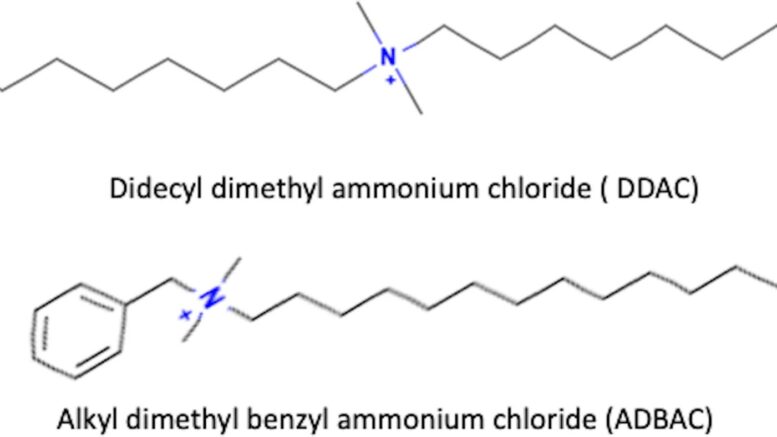In his review, Boyce (2023) explains that, "Due to the substantial increase in the use of disinfectants containing quaternary ammonium compounds (QACs) in healthcare and community settings during the COVID-19 pandemic, there is increased concern that heavy use might cause bacteria to develop resistance to QACs or contribute to antibiotic resistance."
The purpose of this review as stated by the author is to briefly discuss the mechanisms of QAC tolerance and resistance, laboratory-based evidence of tolerance and resistance, their occurrence in healthcare and other real-world settings, and the possible impact of QAC use on antibiotic resistance.
A literature search was conducted using the PubMed database. The search was limited to English language articles dealing with tolerance or resistance to QACs present in disinfectants or antiseptics, and potential impact on antibiotic resistance. The review covered the period from 2000 to mid-Jan 2023.
As Boyce (2023) observes, "Mechanisms of QAC tolerance or resistance include innate bacterial cell wall structure, changes in cell membrane structure and function, efflux pumps, biofilm formation, and QAC degradation. In vitro studies have helped elucidate how bacteria can develop tolerance or resistance to QACs and antibiotics. While relatively uncommon, multiple episodes of contaminated in-use disinfectants and antiseptics, which are often due to inappropriate use of products, have caused outbreaks of healthcare-associated infections. Several studies have identified a correlation between benzalkonium chloride (BAC) tolerance and clinically-defined antibiotic resistance. The occurrence of mobile genetic determinants carrying multiple genes that encode for QAC or antibiotic tolerance raises the concern that widespread QAC use might facilitate the emergence of antibiotic resistance. Despite some evidence from laboratory-based studies, there is insufficient evidence in real-world settings to conclude that frequent use of QAC disinfectants and antiseptics has promoted widespread emergence of antibiotic resistance."
As Boyce (2023) summarizes, "Laboratory studies have identified multiple mechanisms by which bacteria can develop tolerance or resistance to QACs and antibiotics. De novo development of tolerance or resistance in real-world settings is uncommon. Increased attention to proper use of disinfectants is needed to prevent contamination of QAC disinfectants. Additional research is needed to answer many questions and concerns related to use of QAC disinfectants and their potential impact on antibiotic resistance."
Reference: Boyce JM. Quaternary ammonium disinfectants and antiseptics: tolerance, resistance and potential impact on antibiotic resistance. Antimicrobial Resistance & Infection Control. Vol. 12, article number 32 (2023).
